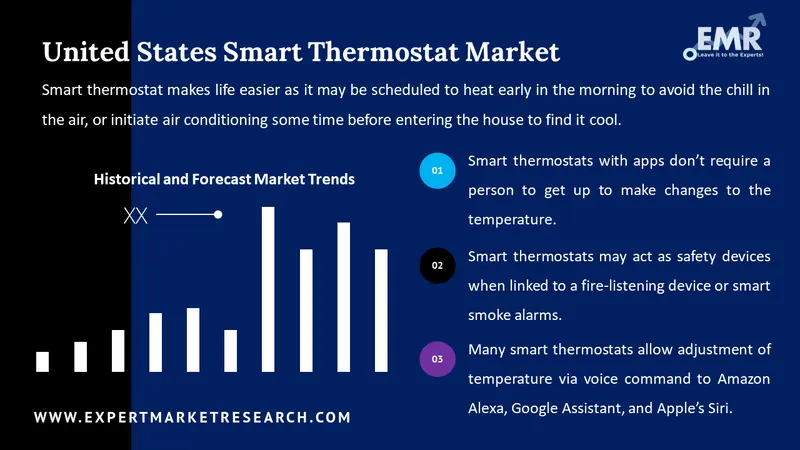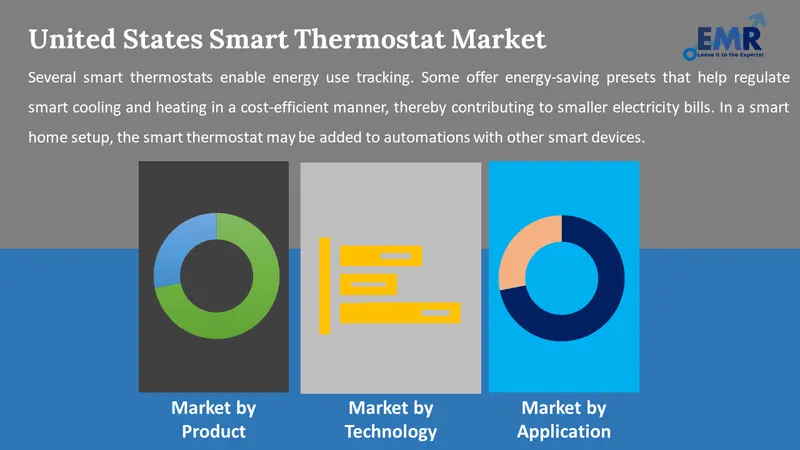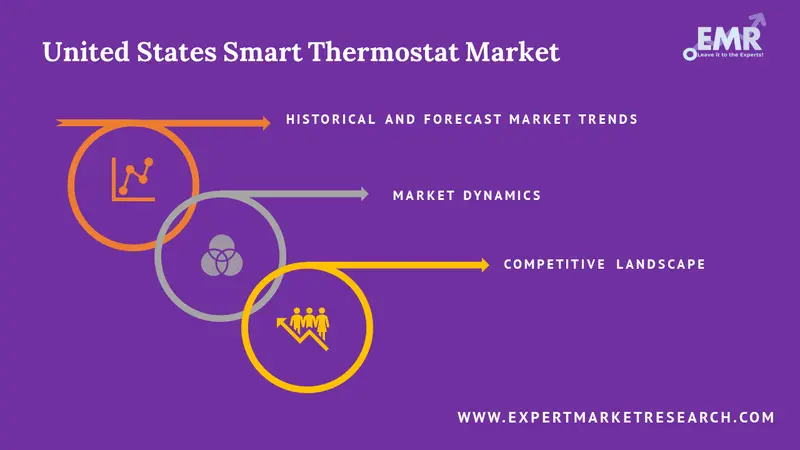

The United States smart thermostat market would likely grow at a CAGR of 16.9% during 2024-2032. Smart thermostats manage a home's cooling and heating; generally, smart thermostats are app-enabled devices and offer several different features.

Read more about this report - REQUEST FREE SAMPLE COPY IN PDF
Being smart devices, several thermostats may be regulated through voice command. Some smart thermostats employ occupancy sensors to ascertain if the resident is home or outside to automatically change temperature. Many thermostats automatically shift between away and home modes on the basis of the phone's location of the resident. Certain devices use remote temperature and proximity sensors to increase the detection range of the thermostat to other areas of the house.
Most smart thermostats are connected through Wi-Fi to an app on the consumer’s phone. The app is used to schedule and regulate heating or cooling, and modify the temperature of the house; it may also set up automations with other smart devices. There also are programmable thermostats that are not connected with an app, but are capable of scheduling cooling and heating routines via a touchscreen display.
Smart thermostat makes life easier as it may be scheduled to heat early in the morning to avoid the chill in the air, or initiate air conditioning some time before entering the house to find it cool. Smart thermostats with apps don’t require a person to get up to make changes to the temperature. This feature is particularly useful for individuals with mobility challenges.
Smart thermostats may act as safety devices when linked to a fire-listening device or smart smoke alarms. In the event of a fire, the thermostat automatically switches off the HVAC to prevent the spread of fire due to blowing air.
Modern smart thermostats display some useful features. For example, smart thermostats exhibit learning. Learning thermostats memorizes schedules to automatically change the temperature to suit consumers’ needs. Learning routines may also help save money on cooling and heating as the HVAC system, heat pump, or furnace will not run when not needed.
Such features are expected to boost the United States smart thermostat market.
Many smart thermostats allow adjustment of temperature via voice command to Amazon Alexa, Google Assistant, and Apple’s Siri. So even if the phone is not close enough, temperature may be adjusted through a simple voice command.
Several smart thermostats enable energy use tracking. Some offer energy-saving presets that help regulate smart cooling and heating in a cost-efficient manner, thereby contributing to smaller electricity bills. In a smart home setup, the smart thermostat may be added to automations with other smart devices. An automation may be created to lower the thermostat, turn off smart lights, and arm the smart home security system. Such features are expected to boost the United States smart thermostat market
Popular smart thermostats include Ecobee Smart Thermostat Premium, Nest Learning Thermostat v.3, Amazon Smart Thermostat, Honeywell RTH8580WF Wi-Fi Thermostat, Nest Thermostat, Ecobee3 Lite, Sensibo Sky, Nest Thermostat E, Honeywell Home T9 Smart Thermostat, and others.

Read more about this report - REQUEST FREE SAMPLE COPY IN PDF
By product, the market is segmented into:
By technology, the United States smart thermostat market is divided into:
By application, the market is classified into:
By region, the market is segmented into:

Read more about this report - REQUEST FREE SAMPLE COPY IN PDF
The report offers an extensive assessment of major players in the United States smart thermostat market; it evaluates their capability, observes latest occurrences such as mergers and acquisitions, capacity expansions, and plant turnarounds:
Using SWOT analysis and Porter’s Five Forces model, the EMR report offers deep insights into the industry.
Historical and Forecast Trends, Industry Drivers and Constraints, Historical and Forecast Market Analysis by Segment: